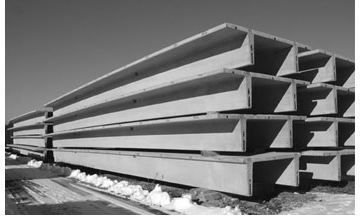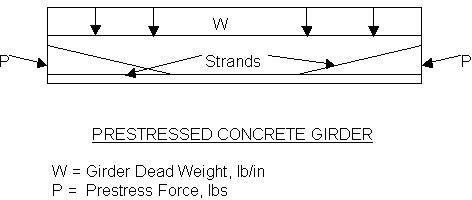Load Testing Prestressed Concrete Beam to Failure
Introduction
For enabling concrete to support a greater load capacity, or to span a greater distance than ordinary reinforced concrete, a French engineer named Eugéne Fressenet devised a process. This was during the early part of the twentieth century and was the introduction of prestressing.
How It’s Done and Benefits of Prestressed Concrete
The process involves the reinforcing of concrete, using pre-tensioning or post-tensioning and the result of this prestressing process places a concrete section in compression. The compressive stresses, have the effect of counteracting the tensile bending stresses of an applied load. However, it still has to be determined if it will perform as required and in this respect, prestressed concrete beam load test to failure becomes an essential part of the overall process.
By the variation of the main materials involved in the concrete mix, various types of concrete are created. The compilation of the mix, will depend on the nature of the structure being built and may involve the delivery aspect and its placement in the formation of the structure.
Testing Procedure
In the event of pre-stressed concrete beams, a laboratory is consulted regarding fatigue tests being conducted on proposed product samples. The requirement is to determine the shear strength of the pre-stressed concrete beams. In general circumstances, a beam will be statically loaded, to about eighty percent of the ultimate flexible capacity. This will be followed by the test beams, being subjected to repetitive loads of varying magnitudes, for about 2,000,000 cycles, of between twenty and forty percent of the flexible capacity. It is an intensive part of the testing program relative to a prestressed concrete beam load test to failure.
From this point, the load magnitudes will be increased and continued with, until the event of “failure”. During this procedure several beams undergo the testing routine and results can be achieved relating to, “shear fatigue” and flexural fatigue”. However, results will also show the fatigue resistance in prestressed concrete beams and any advanced warnings of failure. It is generally recognized in a prestressed concrete beam load test to failure, that ample warnings are provided and indicated by increasing deflection and crack widening, before failure occurs.
Double-T Beam
Tests conducted relative to prestressed concrete bridges, can involve the research evaluation of a full scale “double-T” beam. Tests of

this nature are designed to simulate performances of beams used in various bridges. A conducted test may focus on measured strain distributions, in respect of length and depth of respective beams, transfer lengths, deflections, cracking loads and forces in post-tensioned strands. The ultimate load carrying capacity for the beams will also be determined.
References and Image Credits
https://www.pci.org/pdf/publications/journal/2004/September-October/JL-04-SEPTEMBER-OCTOBER-3.pdf
Image Credits:
